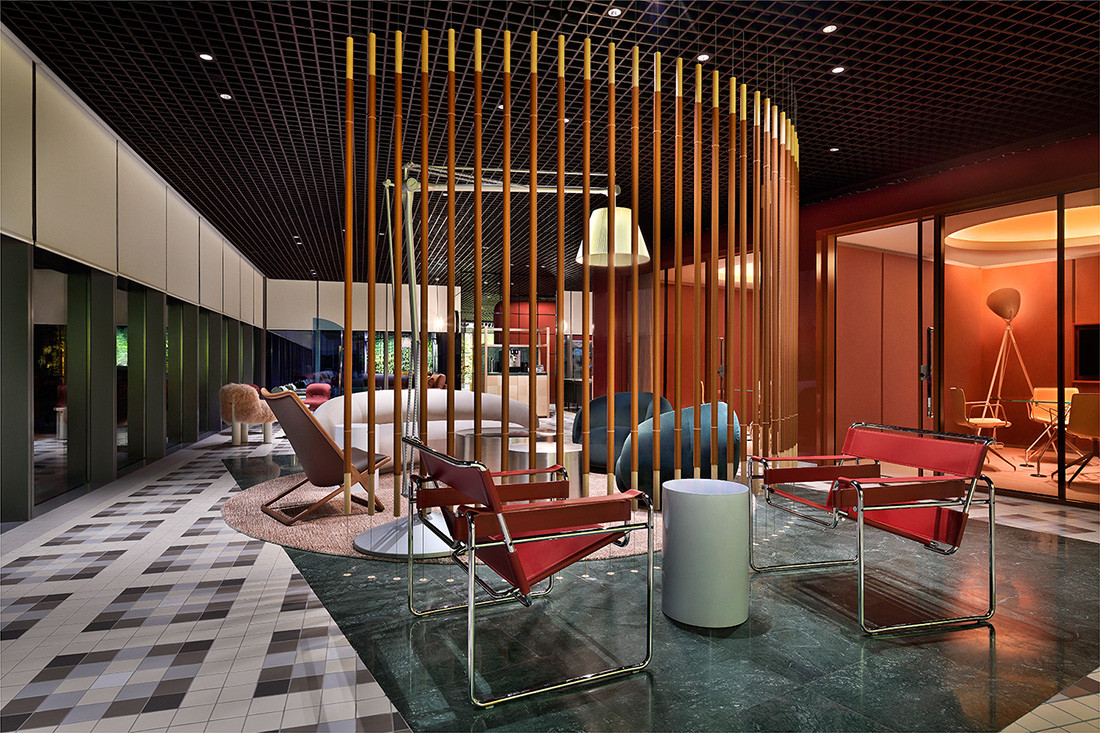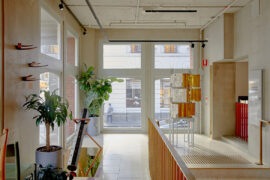The onus is on architects and designers to create places and spaces that are suitably fit for purpose, even if final say over a project’s FF&E schedule is not.

Treasury Wine Estates, designed by Carr | Photography by Earl Carter
October 1st, 2020
“We require from buildings two kinds of goodness: first, that they perform their practical duty well; secondly, that they be graceful and pleasing in doing it” — the 19th-century visionary, John Ruskin, said it first. Then the modernists deduced the notion into the perennially popular motto, ‘form follows function’; and we learned that function follows fit for purpose.
Fit for purpose specifying is one of the rudiments of modern commercial architecture and one that, traditionally, has been the duty of architects and designers to achieve. But these days, to use the words of Mark Swanton, owner and founder of KE-ZU, it’s become “a minefield subject,” that, in recent years, seems to have taken a turn for the worse.
If form follows function; function follows fit for purpose
Mark is not the only one who has been observing the downward slide in the use of fit for purpose ff&e. In fact, his concerns are shared by Richard Munao, founder and managing director for Cult; Yosi Tal, managing director for Designer Rugs; and Anthony Collins, managing director for Stylecraft — to name just a few. To these leading suppliers of high quality, design-led products, it’s clear as day how, where and why projects might be falling short of fit for purpose.
“When I started in this industry some 35 years ago, architects and designers specified products that were fit for purpose and the specification remained unchanged as they controlled the projects,” says Swanton, “these days, it all comes down to money.” Evidently, project ‘power dynamics’ have certainly shifted in recent years and ff&e specification is no longer guaranteed safe and sound in the hands of the design practices. Rather, substitutions are being made at the whim of short-sighted objectives, by stakeholders with little-to-no know-how and experience with what deems what products fit for what purpose.
To the untrained eye, sure, replica products might appear to be ‘same-same, but different’, but whatever savings are made come at a cost — “usually because they don’t come with anything more than the statutory 12 month warranty, do not have local AFRDI strength and durability or GECA environmental certification,” says Swanton.

The Work Project – Asia Square, designed by Hassell | Photography by ekyap
“It’s easy to buy and sell,” says Richard Munao, founder and managing director of Cult, “but what happens if it’s not fit for purpose?” Anecdotally he adds, “I got caught out myself just recently — I saw this fantastic looking pair of pants on Instagram and ordered them, without doing any research, and what arrived didn’t even have a button hole.” Faux pas like these are, no doubt, relatable to us all; but when the context is not a matter of personal shopping, rather the stools for a hot new bar, the rug for a busy hotel foyer or the chairs for an executive boardroom, they suddenly bear far more foreboding weight.
It’s evident that the matter of delivering projects that are fit for purpose, particularly in commercial settings, requires immediate and concerted attention. Specced with suitably fit for purpose products and materials, projects enjoy greater longevity and no superfluous waste, making it as much about building sustainably as it is about upholding architecture’s professional integrity — and therefore the entire design/build team’s concern. For whoever has the final call on a project’s ff&e, the most sound advice is always to “do your research, consult with and trust the experts.”
INDESIGN is on instagram
Follow @indesignlive
A searchable and comprehensive guide for specifying leading products and their suppliers
Keep up to date with the latest and greatest from our industry BFF's!

Merging two hotel identities in one landmark development, Hotel Indigo and Holiday Inn Little Collins capture the spirit of Melbourne through Buchan’s narrative-driven design – elevated by GROHE’s signature craftsmanship.

The undeniable thread connecting Herman Miller and Knoll’s design legacies across the decades now finds its profound physical embodiment at MillerKnoll’s new Design Yard Archives.

London-based design duo Raw Edges have joined forces with Established & Sons and Tongue & Groove to introduce Wall to Wall – a hand-stained, “living collection” that transforms parquet flooring into a canvas of colour, pattern, and possibility.

Recognised as winners at the INDE.Awards 2025, Enter Projects Asia in collaboration with SOM have received The Influencer award. Their work on Terminal 2 Kempegowda International Airport Interiors redefines the aesthetics of airport design through a monumental expression of biophilia, sustainability and craftsmanship.

Stylecraft and NGV call for furniture and lighting designs addressing small-space living, with $20,000 prize and commercial development opportunity.
The internet never sleeps! Here's the stuff you might have missed

Tom Mark Henry refines a layered design legacy into a softly sculpted retreat in Redfern, where light, tactility and crafted detail define a new expression of restrained luxury.

Recognised as winners at the INDE.Awards 2025, Enter Projects Asia in collaboration with SOM have received The Influencer award. Their work on Terminal 2 Kempegowda International Airport Interiors redefines the aesthetics of airport design through a monumental expression of biophilia, sustainability and craftsmanship.